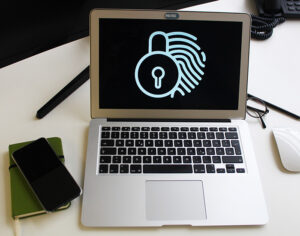
Remote voting in trend: Comparing the security of postal voting and online voting
The demand for postal voting is growing continuously—not least because of the current lockdown situation. The Federal Returning Officer in Germany is critical of this development and sees compliance with the electoral principles at risk. POLYAS regards the security of remote voting systems, such as postal and online voting, as an essential factor for compliance with voting principles. But how secure are these two remote voting systems? You can find out more in this post.
Remote voting
Postal votes are used in political elections and other elections (works council elections, social elections, etc.) as a supplement to the ballot box, so that eligible voters have more freedom in terms of where and when they can cast their votes, and to increase voter turnout.
Another form of remote voting, electronic voting ( online voting) over the Internet, is used in some social institutions (chambers, churches, cooperatives, universities and associations). The aim of online voting is a barrier-free and highly convenient ballot for eligible voters while at the same time ensuring transparency, responsibility, security and efficiency of voting processes.
Is an increasing demand for postal voting a threat to voting principles?
The Federal Returning Officer Georg Thiel is critical of the increasing demand for postal votes. Although this effects voter turnout positively, he considers it to be a threat to the principle of ballot box voting and thus the principles of equal and secret voting.
In order for remote voting to comply with all voting principles, it must meet various security requirements to protect against election fraud and disruptions to running the election. How exactly are postal and online voting systems protected against risk?
How secure is voting by mail?
Starting with the creation and dispatch of the postal voting documents to the correct return and counting of the votes, personalized postal voting documents pass through many pairs of hands —mostly without objective mechanisms of control and documentation. Disruptions can occur when creating and assigning ballot papers, in the mail, or when counting votes.
Election fraud
Election fraud is one of the most frequent and serious disruptions when processing postal votes. This may be the non-compliant delivery of voting slips or the unauthorized filling-out of voting documents, such as during the Stendal municipal election in 2014. Large numbers of incidents came to light, including the misappropriation and theft of ballot papers.
Lost votes
Postal votes must first be shipped by a service provider, stored by the election organizer and finally counted by hand by election workers, which not only costs time, but can also lead to mistakes and lost votes due to human error and fraud. For example, in the Berlin House of Representatives election in 2011 397 votes were found in a trash can in a residential complex, or in the 2009 European elections when 800 letters sent with ballot papers were forgotten by the German Post in the Berlin Pankow constituency.
How secure is online voting?
 Secure online voting systems, such as POLYAS, work with highly sensitive cryptographic methods that enable voting that complies with electoral law and is verifiably secure. Gaining unauthorized access to an online voting system requires an extremely high level of technical expertise—and in case of doubt, everything is documented.
Secure online voting systems, such as POLYAS, work with highly sensitive cryptographic methods that enable voting that complies with electoral law and is verifiably secure. Gaining unauthorized access to an online voting system requires an extremely high level of technical expertise—and in case of doubt, everything is documented.
System integrity
 The Online Voting System POLYAS has implemented mechanisms whereby it is impossible to modify or delete ballot papers in the ballot box, nor can any be added without authorization.
The Online Voting System POLYAS has implemented mechanisms whereby it is impossible to modify or delete ballot papers in the ballot box, nor can any be added without authorization.
In the POLYAS Online Voting System, votes are cast exclusively via encrypted Internet connections (SSL) and passwords are never stored in plain text (SHA-256 algorithms). The ballot paper is encrypted in the voter’s browser already, and is only transmitted to the ballot box in encrypted form so as to eliminate risks during the transfer.
Voting eligibility is controlled by the electoral roll, the contents of which are encrypted and optionally pseudonymized by the online voting service provider. The POLYAS Online Voting System uses cryptographic mechanisms to prevent multiple voting and to ensure that only authorized persons can access the voting system.
Learn more about security at POLYAS now >
Vote counting
Automated vote counting in an online election has organizational advantages in that the results are produced quickly without manual effort.
POLYAS provides evidence of the correctness of the count:
- Recounting using an independent verification tool (universal verification)
- Export of anonymously submitted ballot papers in Excel format for manual recounting
Advantages of secure remote voting systems
Voters benefit from remote voting. The more it is used, the greater is the influence of votes cast via remote voting on the election result. It is therefore vital that demands on security must be correspondingly high.
With a postal vote, there is no way to prove that there has been no manipulation. Again and again there will be reports of cases where inappropriate interventions have influenced the election results.
Organizers who implement online voting must ensure that the voting system complies with voting principles and that appropriate security measures are in place to lastingly eliminate the potential for manipulation. The latest technology makes a reality of (verifiably) secure online voting.
Do you wish to conduct live voting or nominations and elections securely and conveniently online and keep track of a complex electoral process? You can create your own online voting project in just a few steps with POLYAS.